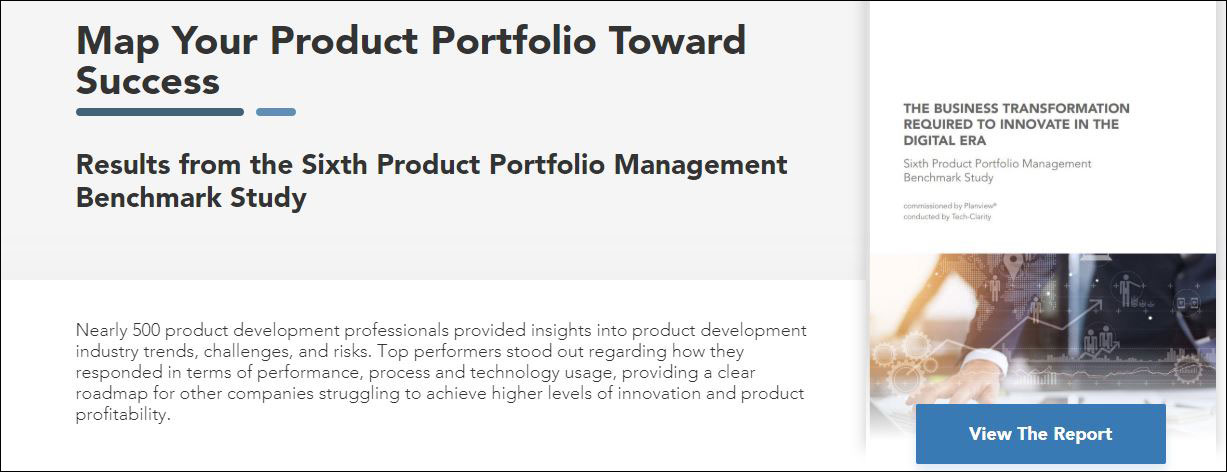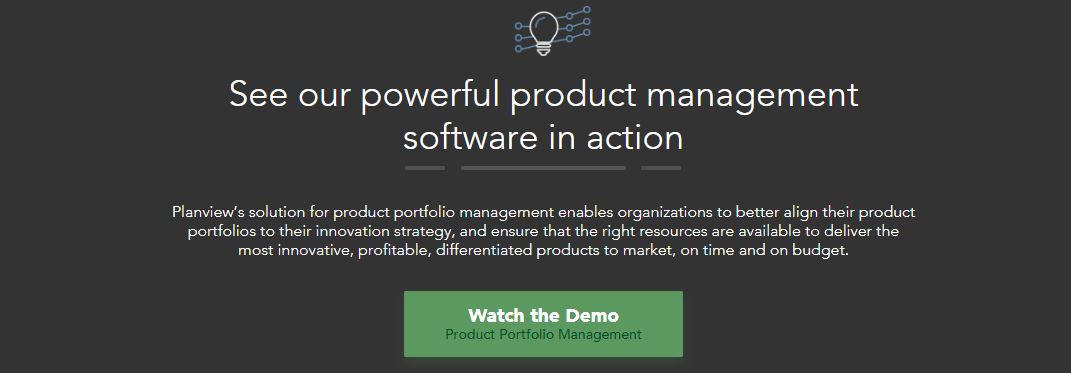
In our last piece of this series, we described the need for data visibility as prerequisite to making sound portfolio management decisions. In this, the fifth in our eight-part series, we cover product development processes as a key success facilitator. Here, we’ll delve into how to make the most of the data visibility enhancements gleaned from part four. If you haven’t already, catch up on the previous four parts of this series:
- Part 1: The Complexity of Managing Smarter, More Connected Products
- Part 2: Connecting Innovation Investments with Delivery
- Part 3: Managing Product Portfolio Challenges in the Digital Age
- Part 4: Ensuring the Life Blood of Your Business: Data Visibility
Part 5: A Focus on Process
The Sixth Product Portfolio Management Benchmark Study (conducted by Tech-Clarity) has revealed both industry improvements and surprising improvement gaps. One of the gaps came in the form of companies failing to implement consistent product innovation and product development processes.
Perhaps this is because even though companies understand that product development processes are performance drivers, there is still debate about the type of process that works best. As we have examined the execution aspect of data driven decisions, we’ve seen that there is room for improvement in the area of repeatable process management.
Be Consistent
A surprising fact revealed by the study is that organizations that follow repeatable, measurable processes fare better than those that don’t, regardless of the methodology. They reported that they are better able to make powerful trade-off decisions, identify potential roadblocks that threaten key milestones, and execute on strategy.
One-quarter of the survey respondents said they follow well-defined, structured processes for product innovation and development, but what does that mean for the remainder of the industry? The study suggests that some hard-hitting questions are in order. Primarily:
“What is the impact structured processes are having on fiscal performance?”
Changing the Game
Something that was not a surprise is that under-performers are less adherent to defined processes, risking inconsistent, unpredictable results and wasted time and resources. We further discovered that two elements in the adherence to defined processes camp were critical to successfully driving performance:
- Capacity planning; and
- The ability to kill projects and products quickly.
Only the products for which businesses have the resources—people, money, technology, applications, and production lines—must take the priority. Organizations who do not prioritize the two elements above and waste resources on products that are likely to under-perform, are, themselves, likely to under-perform.
Plan for Capacity
Only 15 percent of lower performing companies report that they are “excellent” at accurately managing and forecasting resource capacity. As a result, these companies tend to have too many projects for their resources. The main reason for this struggle lies in the inability to see all projects and resources in a centralized view—something we indicated in the last piece regarding data visibility. Without a centralized view of your data, you can’t expect to do a good job in the arena of capacity planning.
We also found that across all participants, nearly one-quarter said their resource capacity planning capabilities are “Excellent,” the most significant shift in this study to date. This signals a heightened awareness of the importance of resource management, which is good news and supports the findings of
a previous report.
The 2016 Resource Management and Capacity Planning Benchmark Study found that higher maturity product development teams could respond much more quickly to innovation opportunities. Rather than weeks or months, they were able to address these opportunities in minutes, hours, or days.
Kill Projects Early and Often
The second process that points toward maturity in product development is the ability to fail fast and stop or cancel product development projects earlier in the commercialization process. Only 25% of respondents reported being able to kill products early enough in the commercialization process. This, despite the fact that it’s been established that wasting resources on products that are likely to under-perform, leads to organizational under-performance.
When surveyed why companies are loath to kill projects, the resounding answer is customer commitments at a significant 48% and “Kill criteria are unclear or nonexistent” coming in at 43%. It must, therefore, be acknowledged that organizations may feel powerless to address the issue. This, however, underscores the value of data visibility. By harnessing the power of data, product leaders can more readily make difficult decisions to kill projects.
Follow the Leaders
86% of top performers report that they follow consistent processes “always” or “most of the time,” instead of reinventing processes and decision-making criteria as they go. These industry leaders focus on making the best decisions for the business without being distracted by what to do next. Their faithfulness to process means they are executing on strategy.
Follow along with this eight-part series regarding the discipline and importance of PPM to transform your organization into one of the top performers we’ve described. In our next installment, we’ll focus on leveraging technology to execute this transformation. Learn more by reading the next parts of this series, listed below:
- Part 6: Technology: The Key to Resolving Product Portfolio Challenges
- Part 7: A Product Development Process for Successful Strategic Outcomes
- Part 8: 6 Product Portfolio Management Best Practices
Check out the results and “Map Your Product Portfolio Toward Success.” Also, don’t forget to read the full benchmark report “The Business Transformation Required to Innovate in the Digital Era” and to register for the webinar, “The Surprising Secrets to Delivering Smarter, More Connected Products,” to learn more.






